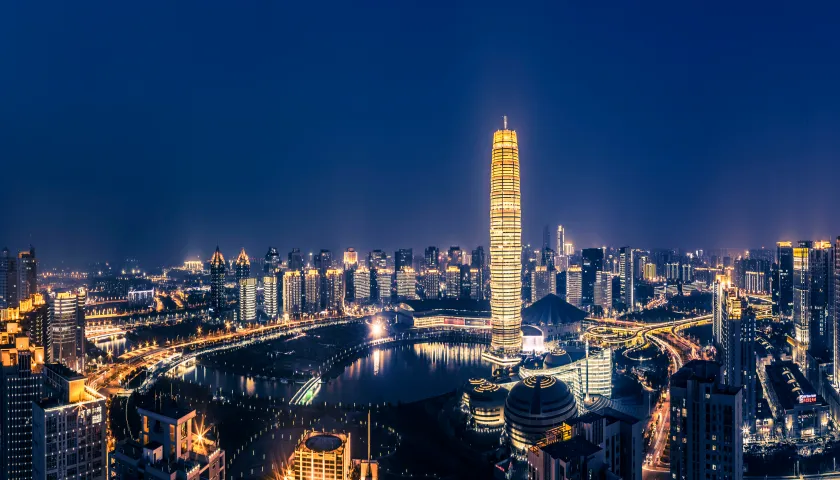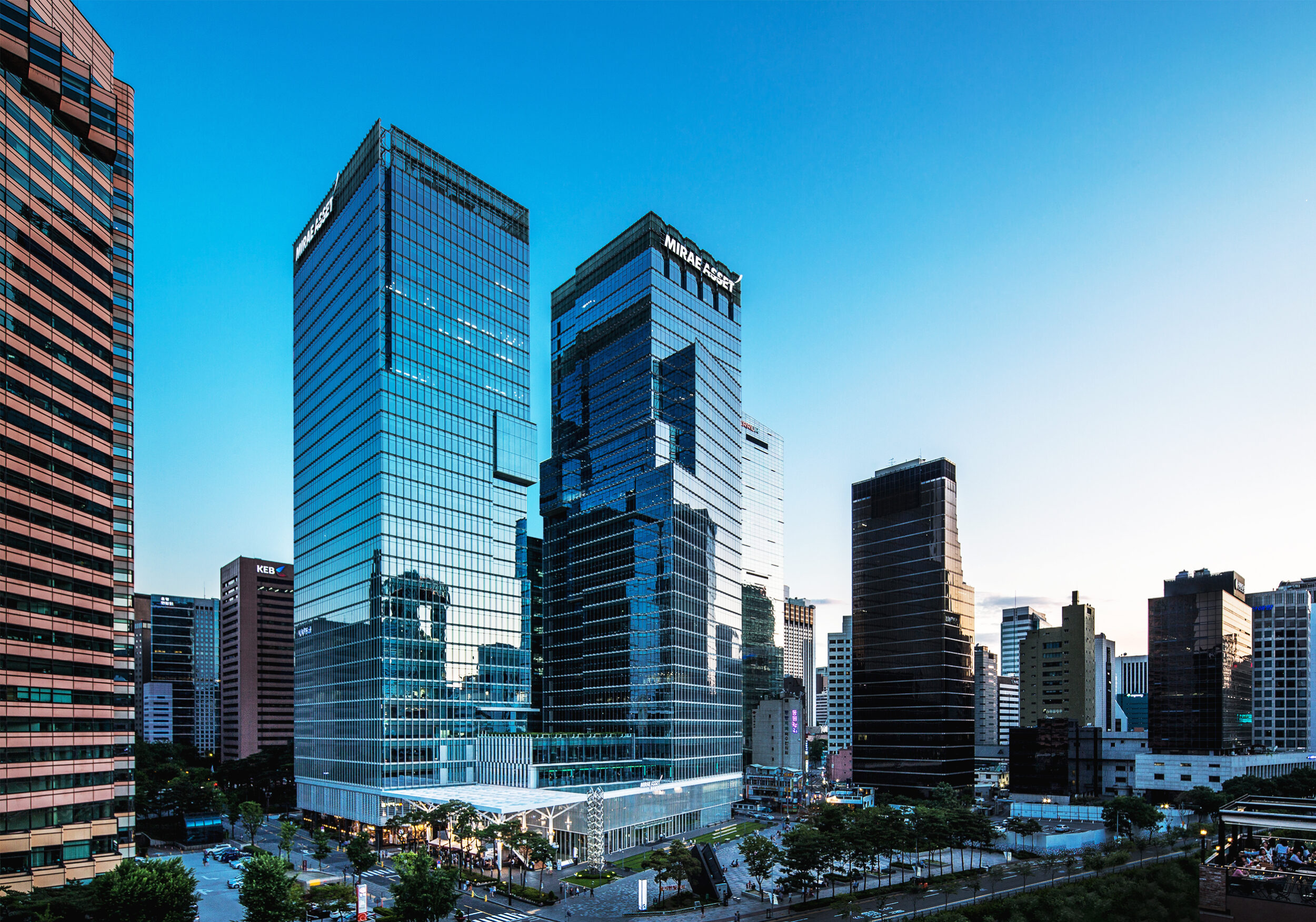Since the Zhengzhou-Luoyang-Xinxiang National Independent Innovation Demonstration Zone scheme was given approval by the central government of China in April 2016, the Zhengzhou National Hi-tech Industrial Development Zone has entered a new stage of high-quality development. Over the past three years, Zhengzhou Hi-tech has achieved tremendous growth, placing it among the top 20 in a recent assessment of 168 hi-tech zones across China.
Companies in strategic emerging industries such as the Internet of Things, BeiDou satellite applications, electronic information and new materials are growing rapidly in Zhengzhou Hi-tech. In particular, a number of leading companies have set up offices and facilities in the zone, in sectors such as sensor technologies (Hanwei, NewCapec, Suntront); network security (H3C, Venustech); cloud computing and big data analytics (Alibaba, Tencent, ZBJ); and BeiDou satellite applications (Tiamaes, Vcom, Thinker Automatic). Zhengzhou Hi-tech has also been designated as a national demonstration zone for cultivating well-known brands in the field of BeiDou satellite application.
Zhengzhou Hi-tech is home to data centres for all three major national telecommunications carriers. The National Supercomputing Center in Zhengzhou is also under construction in the zone. Every year, Zhengzhou Hi-tech hosts the annual Qiangwang Cup cybersecurity competition, forum and trade show – an important industry barometer. For the past two years, it has also been a co-organizer of the highly influential World Sensors Summit.
Home to Henan province’s collaborative innovation
Henan province’s first demonstration zone for 5G applications and collaborative innovation is being built in Zhengzhou Hi-tech. As a result, the zone has witnessed more than 10,000 relevant patent applications from companies based in the zone each year for four consecutive years. This makes Zhengzhou Hi-tech the city’s leading source of invention patent applications and grants. In fact, with more than 100 valid patents for inventions per 10,000 residents, Zhengzhou Hi-tech is ahead of the entire province.
Today, Zhengzhou Hi-tech is home to 14 accredited leading innovative enterprises, accounting for 58.3% of all such enterprises in the city or 14% in the province. It is also home to 40.2% of the city’s, or 17.2% of the province’s, accredited new and high-tech enterprises, as well as 37.8% of the city’s or 16.5% of the province’s accredited small and medium technology enterprises. Eleven new research and development institutes have decided to come to Zhengzhou Hi-tech and the zone has also signed contracts with Zhejiang University and the China University of Geosciences (Beijing) to co-establish research institutions for industrial technologies.
To promote international collaboration for innovation, Zhengzhou Hi-tech has tapped into global resources in Boston (US), Oxford (UK), Munich (Germany), and Israel. Its platform for big data analytics and resource sharing built in collaboration with ZBJ – China’s largest outsourcing platform – has been put into operation. This new platform helps connect the zone with the Zhongguancun technology hub in Beijing for talent recruitment and high-tech enterprise incubation and promotion.
As part of its growth strategy, Zhengzhou Hi-tech has co-organized major industry events such as the World Sensors Summit, the Annual Conference for Global Navigation Satellite System and Location-based Services, and the BeiDou Satellite Applications Forum. It has signed project contracts with leading scientific institutions including the Institute of Microelectronics of the Chinese Academy of Sciences and the Suzhou Institute of Biomedical Engineering and Technology. Zhengzhou Hi-tech has also signed contracts with major corporations for them to set up offices in the zone. Examples include Tsinghua Unigroup’s global headquarters for intelligent devices, H3C Big Data’s national headquarters, Beijing Global Urtour Technology’s national innovation and operations centre, Googol Technology’s Zhengzhou institute of intelligent industries, and China Greatwall Technology’s Zhengzhou branch.
So far, the zone has supported 15 companies as they went public on the Main Board of the A-share market and 76 companies as they became listed on the New Third Board. These figures give the zone yet another number one among the districts of Zhengzhou.
Policies for business development in Zhengzhou Hi-tech
In 2019, Zhengzhou Hi-tech was the first zone in the province to adopt policies in support of business development – ie “Measures for the Identification and Development of Gazelle Businesses” and “Policies for a Tiered Development System for Unicorn Companies”. Such a move was acclaimed by the provincial Department of Science and Technology, which then promoted these policies in other places within the province.
Another first in the province for Zhengzhou Hi-tech was a pilot policy it adopted for land to be used for new types of businesses, which led to a few new projects in Henan, such as the Bauhinia Science Park and Tianjian Lake Big Data Industrial Park.
Zhengzhou Hi-tech has also set up a scientific and technological innovation professional service voucher system, with an annual amount of Rmb100 million to provide upfront support to technology businesses, professionals, platforms and institutions as they purchase professional services needed for their innovation and development.
To drive further reform in the zone, Zhengzhou Hi-tech has issued the province’s first regulations governing the management of an industrial development zone, the “Interim Regulations of Zhengzhou High-tech Industrial Development Zone”. It is required, under these regulations, that current staff must be repositioned through an application and selection process. The Zhengzhou Hi-tech management committee now operates on a much leaner structure as the number of departments has been reduced from 36 to 10. Such a change freed up human resources in administrative functions and made them available to grassroots organizations and businesses. A number of accomplished professionals were hired through open search and placed in management positions.
The Zhengzhou Hi-tech management committee has worked together with the operations centre of the development zone to improve services and helped resolve a number of difficult issues related to business development. It started the first pilot project in Zhengzhou to improve the approval procedures for construction of projects, which has been highly commended by the province’s Department of Housing and Urban-rural Development. Zhengzhou Hi-tech was also the first in the province to offer an expedited process for business registration that allows new businesses to complete registration within one day at zero cost, and real estate transaction and registration to be completed and licences to be issued within 24 hours through a self-service process.
Zhengzhou Hi-tech’s GDP growth battles past Covid crisis
At the beginning of this year, to deal with the Covid-19 outbreak, the Zhengzhou Hi-tech administration decided on the first day of the Chinese new year of 2020 to call back its staff from their spring festival holidays, and they all returned to their positions to fight the virus. Zhengzhou Hi-tech quickly took action to issue guidelines for the battle against Covid-19, and provided bridge loans and other assistant schemes, such as loan risk compensation funds, to help businesses get through the crisis. Such practices were later adopted in other areas of the city, too. As a result of Zhengzhou Hi-tech’s efforts, Covid-19 was brought under control as businesses reopened and people went back to work, contributing to a rapid recovery in economic and social development.
In the first half of the year, Zhengzhou Hi-tech’s GDP went from negative to 0.1% – 0.3 percentage points higher than the city’s average and 0.4 percentage points higher than that of the province. In the zone, enterprises with an annual revenue of Rmb20 million grew by -5.2% – although in fact they grew by 8.3% in the second quarter, increasing 28.7 percentage points from the first quarter. Fixed-asset investment in Zhengzhou Hi-tech totalled Rmb11.7 billion, an increase of 2%; Zhengzhou Hi-tech’s public budget resources reached Rmb3.54 billion, a growth of 4.5% and 3.8 percentage points higher than the city’s average. Agreements have been signed for seven new projects with an aggregate value of Rmb19.535 billion, which represents 66% of Zhengzhou Hi-tech’s annual target this year. Of this amount, Rmb18.435 billion was committed to projects in Zhengzhou Hi-tech’s leading industries.
The business environment in Zhengzhou Hi-tech keeps improving. Over 80% of government services are accessible via an e-governance website. The Zhengzhou Hi-tech administration provides one-stop services for business registration, so that all the procedures required for business registration can be completed online cost-free within one day.
Zhengzhou Hi-tech’s main achievements from 2016 to 2019:
- Zhengzhou Hi-tech’s GDP grew from Rmb26.427 billion to Rmb49.624 billion, a growth of 88% year-on-year
- Public and private investment in R&D increased from Rmb1.717 billion to Rmb4.957 billion, a 187% increase
- Added value in high-tech industries grew from Rmb6.88 billion to Rmb10.389 billion, a 51% growth
- Total amount of tax revenue grew from Rmb8.829 billion to Rmb14.568 billion, a 65% growth
- 30,500 new businesses were set up
- The number of high-tech enterprises grew from 405 to 823, up by 103%
- The number of technology-based small and medium-sized enterprises increased from 434 to 1,399, a 218% growth
- The number of R&D institutions at provincial level or above grew from 120 to 233, up by 94%
- The number of registered new type of R&D institutions increased from 3 to 11, up by 267%
- The number of national enterprise technology centres grew from 4 to 10, up by 150%
- The number of national innovation entities increased from 9 to 22, up by 144%.





